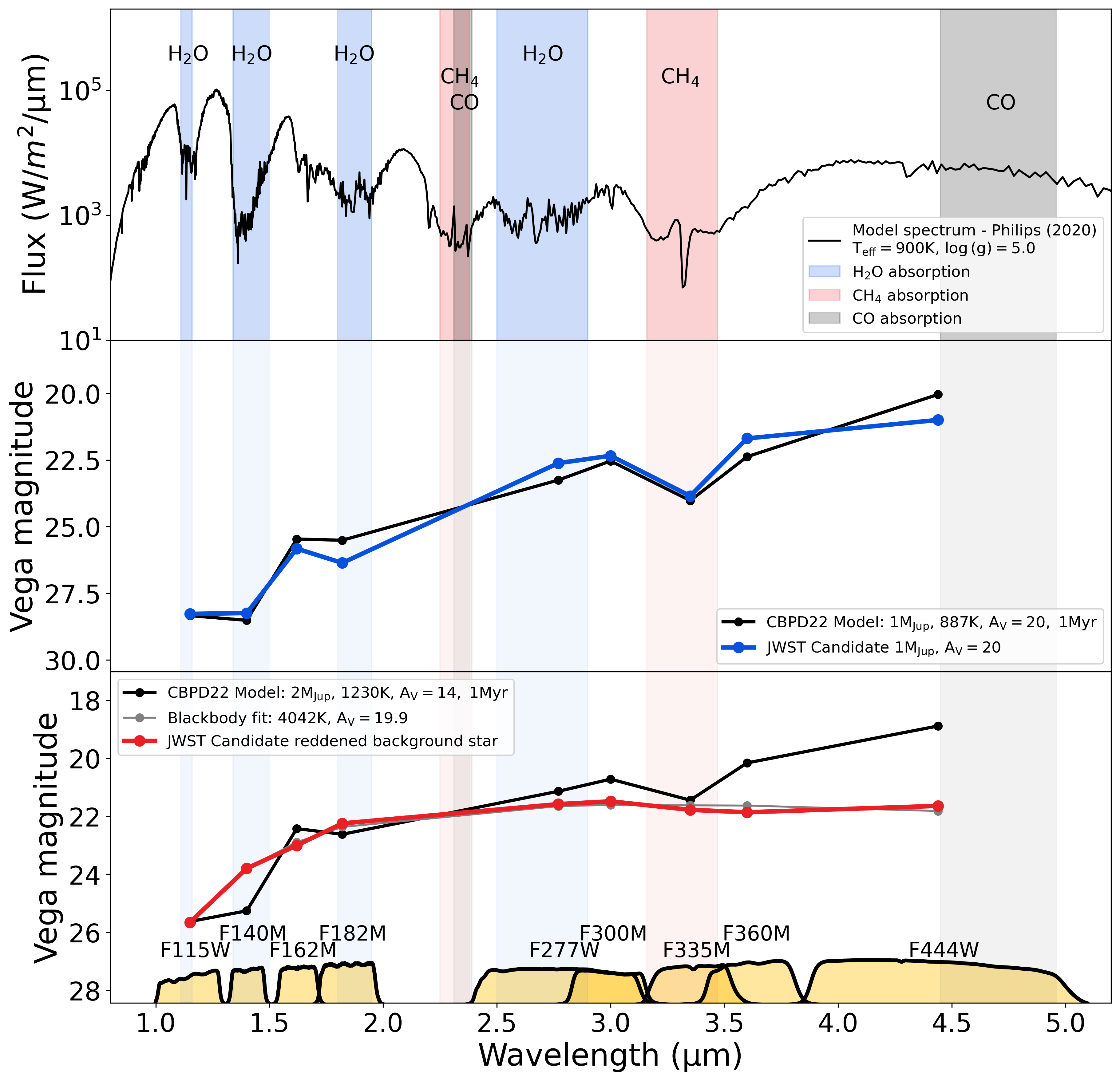Jupiter Mass Binary Objects in the Trapezium Cluster
Abstract
A key outstanding question in star and planet formation is how far the initial mass function of stars and sub-stellar objects extends, and whether or not there is a cut-off at the very lowest masses. Isolated objects in the planetary-mass domain below 13 Jupiter masses, where not even deuterium can fuse, are very challenging to observe as these objects are inherently faint. Nearby star-forming regions provide the best opportunity to search for them though: while they are young, they are still relatively warm and luminous at infrared wavelengths. Previous surveys have discovered a handful of such sources down to 3--5 Jupiter masses, around the minimum mass limit established for formation via the fragmentation of molecular clouds, but does the mass function extend further? In a new James Webb Space Telescope near-infrared survey of the inner Orion Nebula and Trapezium Cluster, we have discovered and characterised a sample of 540 planetary-mass candidates with masses down to 0.6 Jupiter masses, demonstrating that there is indeed no sharp cut-off in the mass function. Furthermore, we find that 9\% of the planetary-mass objects are in wide binaries, a result that is highly unexpected and which challenges current theories of both star and planet formation.
- Publication:
-
arXiv e-prints
- Pub Date:
- October 2023
- DOI:
- arXiv:
- arXiv:2310.01231
- Bibcode:
- 2023arXiv231001231P
- Keywords:
-
- Astrophysics - Earth and Planetary Astrophysics;
- Astrophysics - Solar and Stellar Astrophysics
- E-Print:
- 24 pages, 4 figures
